I'm new to Nolearn and Theano in general. When I tried the code in a Nolearn tutorial, I get extremely high error rates of 0.9!
Why am I getting such high errors while the tutorial is getting errors of 0.005? Is anyone else able to reproduce this problem?
Using Theano 0.7.0, Lasagne v0.1, nolearn v0.5 on OS X Yosemite.
Output
[DBN] fitting X.shape=(46900, 784)
[DBN] layers [784, 300, 10]
[DBN] Fine-tune...
100%
Epoch 1:
100%
loss 2.30829815265
err 0.901340505464
(0:00:30)
Epoch 2:
100%
loss 2.30304712187
err 0.902813353825
(0:00:34)
Epoch 3:
100%
loss 2.30303548692
err 0.90072148224
(0:00:34)
Epoch 4:
100%
loss 2.30297605197
err 0.902322404372
(0:00:28)
Epoch 5:
100%
loss 2.30295462556
err 0.901191086066
(0:00:26)
Epoch 6:
100%
loss 2.30293222366
err 0.898352117486
(0:00:33)
Epoch 7:
100%
loss 2.30283567033
err 0.901425887978
(0:00:34)
Epoch 8:
100%
loss 2.30283342522
err 0.90059340847
(0:00:35)
Epoch 9:
100%
loss 2.30283433199
err 0.902813353825
(0:00:33)
Epoch 10:
loss 2.30279696997
err 0.897861168033
(0:00:33)
Code
# import the necessary packages
from sklearn.cross_validation import train_test_split
from sklearn.metrics import classification_report
from sklearn import datasets
from nolearn.dbn import DBN
import numpy as np
# grab the MNIST dataset (if this is the first time you are running
# this script, this make take a minute -- the 55mb MNIST digit dataset
# will be downloaded)
print "[X] downloading data..."
dataset = datasets.fetch_mldata("MNIST Original")
# scale the data to the range [0, 1] and then construct the training
# and testing splits
(trainX, testX, trainY, testY) = train_test_split(
dataset.data / 255.0, dataset.target.astype("int0"), test_size = 0.33)
# train the Deep Belief Network with 784 input units (the flattened,
# 28x28 grayscale image), 300 hidden units, 10 output units (one for
# each possible output classification, which are the digits 1-10)
dbn = DBN(
[trainX.shape[1], 300, 10],
learn_rates = 0.3,
learn_rate_decays = 0.9,
epochs = 10,
verbose = 1)
dbn.fit(trainX, trainY)
Classification report
